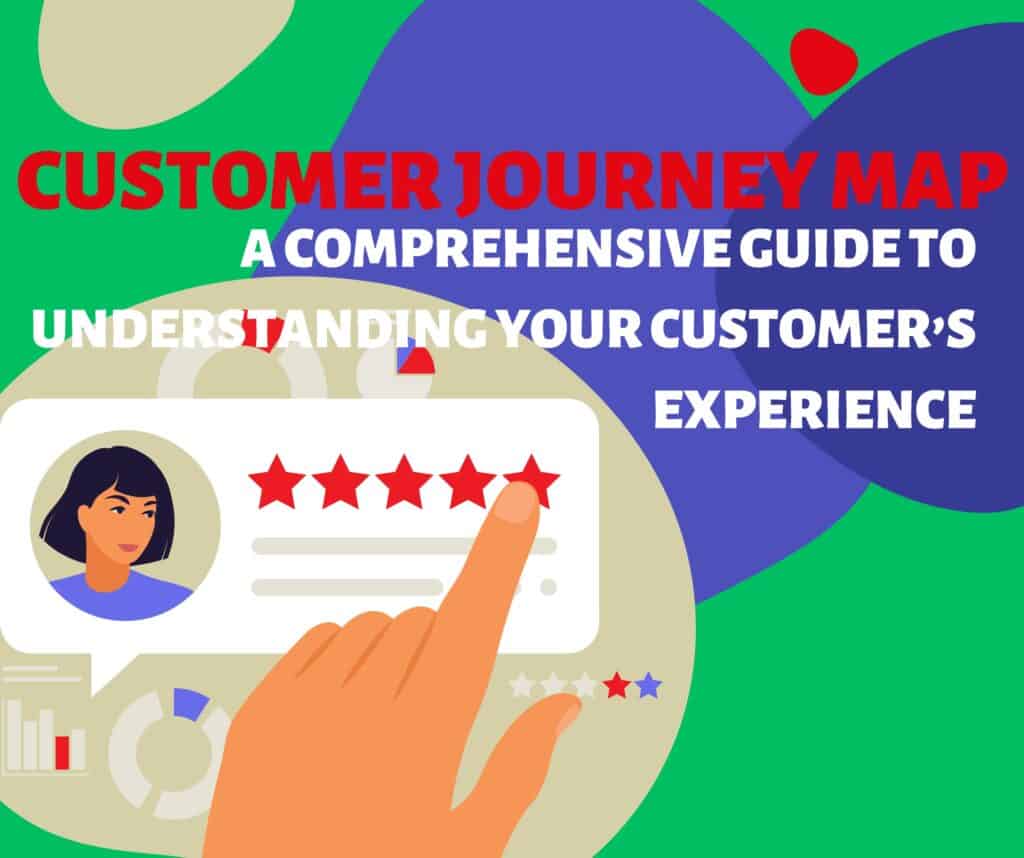In today’s digital age, e-commerce has transformed the way businesses operate and how consumers shop. As technology advances, online shopping has become increasingly prevalent, offering unparalleled convenience and accessibility. But what exactly is e-commerce, and why is it so crucial in the current market landscape?
Brief Overview of E-Commerce
E-commerce, or electronic commerce, refers to the buying and selling of goods and services over the internet. It encompasses a range of online activities, from retail sales and auctions to digital products and services. E-commerce businesses operate through various platforms, including dedicated online stores, marketplaces like Amazon and eBay, and mobile applications. This model allows businesses to reach customers across the globe without the constraints of physical locations.
Start building your online income now. Click to learn more.
Try Wealthy Affiliate (For Free).
The rise of e-commerce has been driven by several factors, including the proliferation of smartphones, the expansion of internet access, and changing consumer behaviors. Online shopping offers numerous advantages, such as 24/7 availability, a wider selection of products, and the ability to compare prices easily. For businesses, e-commerce provides opportunities for growth, scalability, and a broader customer base.
Importance of E-Commerce in Today’s Market
E-commerce has become a cornerstone of modern business, with its significance evident in various aspects:
- Global Reach: Unlike traditional brick-and-mortar stores, e-commerce allows businesses to reach a global audience. This expanded market access can lead to increased sales and brand recognition.
- Cost Efficiency: Operating an online store often involves lower overhead costs compared to maintaining a physical storefront. Savings on rent, utilities, and staffing can translate into better profit margins.
- Data-Driven Insights: E-commerce platforms provide valuable data about customer behavior, preferences, and purchasing patterns. Businesses can use this data to make informed decisions, optimize their strategies, and enhance customer experiences.
- Convenience and Flexibility: For consumers, e-commerce offers the convenience of shopping from anywhere. This flexibility has become increasingly important in today’s fast-paced world.
What Readers Will Learn from the Article
In this comprehensive guide, readers will gain a deep understanding of what it takes to start and succeed in the e-commerce industry. We will cover:
- The Basics of E-Commerce: An overview of e-commerce models and how they work, including examples of successful businesses.
- Starting Your E-Commerce Business: Step-by-step guidance on researching, planning, and setting up an online store, including tips on choosing the right platform and designing your store.
- Business Models and Strategies: Insight into various e-commerce models, such as dropshipping and subscription-based businesses, along with effective strategies for marketing and growing your business.
- Managing and Scaling Your Business: Best practices for customer service, performance tracking, and scaling your operations to reach new heights.
By the end of this article, you’ll have a clear roadmap for launching and growing your e-commerce business, equipped with practical knowledge and actionable strategies to help you succeed in the competitive online marketplace.
What is an E-Commerce Business?
Definition and Explanation
E-commerce, short for electronic commerce, refers to the process of buying and selling goods and services over the internet. It involves various online transactions where businesses and consumers interact through digital platforms rather than physical stores. E-commerce businesses operate through websites, online marketplaces, and mobile apps, leveraging the power of the internet to conduct trade.
The essence of e-commerce lies in its ability to facilitate transactions seamlessly and efficiently, providing convenience and accessibility to both sellers and buyers. E-commerce encompasses a wide range of activities, including:
- Retail Sales: Selling products directly to consumers through online stores.
- Service Delivery: Providing digital services such as software, subscriptions, or consulting services.
- Marketplaces: Platforms where multiple sellers offer their products or services to buyers, like Amazon or Etsy.
E-commerce has revolutionized the way we shop, enabling transactions from anywhere at any time, and has become a critical component of the global economy.
Disclosure: This post contains affiliate links, and I may earn a commission if you purchase through them. These resources provide access to valuable tools and support for your online success.
Try Wealthy Affiliate (For Free).
Types of E-Commerce Models
E-commerce businesses can be classified into several models based on the nature of their transactions and relationships. Understanding these models helps businesses choose the right approach for their operations:
- B2B (Business-to-Business)
- Definition: Transactions occur between businesses rather than between businesses and individual consumers.
- Example: A manufacturer selling raw materials to a wholesaler, or a software company providing enterprise solutions to other businesses.
- Characteristics: Often involves larger order volumes, longer sales cycles, and more complex negotiations.
- B2C (Business-to-Consumer)
- Definition: Businesses sell products or services directly to individual consumers.
- Example: An online clothing retailer selling apparel to customers, or a digital streaming service offering subscriptions to users.
- Characteristics: Focuses on customer experience, convenience, and marketing strategies aimed at attracting individual buyers.
- C2C (Consumer-to-Consumer)
- Definition: Transactions take place between individual consumers, typically facilitated by a third-party platform.
- Example: Online auction sites like eBay, or peer-to-peer marketplaces such as Craigslist where individuals buy and sell items to each other.
- Characteristics: Often involves platforms that provide a marketplace for individuals to list and purchase items.
- C2B (Consumer-to-Business)
- Definition: Individuals offer products or services to businesses, often through an online platform.
- Example: Freelancers providing services through platforms like Upwork, or consumers selling unique products to businesses via crowdsourcing platforms.
- Characteristics: Focuses on leveraging individual contributions and unique offerings to benefit businesses.
Examples of Successful E-Commerce Businesses
To illustrate the diverse nature of e-commerce, consider these examples of successful businesses across various models:
- Amazon (B2C): One of the largest online retailers in the world, Amazon offers a vast array of products directly to consumers. It has become synonymous with online shopping due to its extensive product selection, efficient delivery services, and customer-centric approach.
- Alibaba (B2B): Alibaba connects businesses with suppliers and manufacturers globally, facilitating bulk transactions and trade between companies. It is a leading platform for B2B e-commerce, providing a marketplace for businesses to source products and services.
- eBay (C2C): eBay allows individuals to buy and sell items through online auctions and fixed-price listings. It has established a robust platform for consumer-to-consumer transactions, fostering a community of buyers and sellers.
- Etsy (C2C): Etsy focuses on handmade, vintage, and unique items sold by individuals. It provides a platform for consumers to sell their creative products directly to other consumers, highlighting the C2C model’s success in niche markets.
- Upwork (C2B): Upwork connects freelancers with businesses seeking specialized skills and services. It exemplifies the C2B model by allowing individuals to offer their expertise to companies in need of freelance work.
How to Start an E-Commerce Business
Starting an e-commerce business involves several critical steps, from researching your market to setting up your online store. Here’s a detailed guide to help you navigate the process:
Research and Planning
Identify Your Niche
- Definition: A niche is a specialized segment of the market for a particular kind of product or service. Identifying your niche helps you focus on a specific audience and differentiate your business from competitors.
- How to Identify Your Niche:
- Passion and Expertise: Choose a niche that aligns with your interests and knowledge. Passion for the product or service will keep you motivated and help you better understand your market.
- Market Demand: Assess the demand for products within your niche. Use tools like Google Trends or keyword research tools to gauge interest levels.
- Competition: Analyze the competition in your niche. Identify gaps or underserved areas that you can target to offer unique value.
Ready to take control of your income? Click here to begin.
Try Wealthy Affiliate (For Free).
Conduct Market Research
- Purpose: Market research helps you understand the needs, preferences, and behaviors of your target audience, as well as the competitive landscape.
- How to Conduct Market Research:
- Surveys and Questionnaires: Collect feedback from potential customers through surveys. Ask about their preferences, pain points, and buying habits.
- Competitive Analysis: Research your competitors to understand their strengths, weaknesses, pricing, and marketing strategies. Identify what sets your business apart.
- Industry Reports: Review industry reports and market data to gain insights into trends, growth projections, and market opportunities.
Create a Business Plan
- Definition: A business plan is a comprehensive document that outlines your business goals, strategies, target market, and financial projections.
- Components of a Business Plan:
- Executive Summary: A brief overview of your business concept, goals, and how you plan to achieve them.
- Market Analysis: Detailed information about your target market, competitors, and industry trends.
- Marketing Strategy: Your approach to reaching and engaging your target audience, including promotional tactics and sales channels.
- Operational Plan: How you will run your business day-to-day, including supply chain management, staffing, and technology.
- Financial Plan: Projections for revenue, expenses, and profitability, along with a budget and funding requirements.
Choose Your E-Commerce Platform
Comparison of Popular Platforms
- Shopify
- Overview: Shopify is a user-friendly, hosted e-commerce platform that offers a range of features for building and managing an online store.
- Pros:
- Easy to set up and use, with a range of customizable themes.
- Integrated payment processing and shipping solutions.
- Extensive app marketplace for additional functionality.
- Cons:
- Monthly fees and transaction fees can add up.
- Limited control over server and software customization.
- WooCommerce
- Overview: WooCommerce is a WordPress plugin that turns a WordPress site into a fully functional e-commerce store.
- Pros:
- Highly customizable with a wide range of themes and plugins.
- No monthly fees, but you may incur costs for hosting and additional plugins.
- Ideal for users already familiar with WordPress.
- Cons:
- Requires more technical knowledge for setup and maintenance.
- Performance can be affected by the quality of hosting and plugins.
- BigCommerce
- Overview: BigCommerce is a robust, hosted e-commerce platform designed for scalability and flexibility.
- Pros:
- Advanced built-in features, including SEO tools and multi-channel selling.
- No transaction fees and support for a wide range of payment gateways.
- Scalable solution suitable for growing businesses.
- Cons:
- Higher monthly fees compared to some other platforms.
- Learning curve for more complex features and customization.
Pros and Cons of Each Platform
- Shopify: Best for ease of use and built-in features, but comes with higher costs.
- WooCommerce: Great for flexibility and cost control, but requires more technical management.
- BigCommerce: Ideal for growing businesses with its advanced features, though it has a higher price point.
Set Up Your Online Store
Design and User Experience Considerations
- Design: Choose a clean, professional design that aligns with your brand and appeals to your target audience. Ensure your design is responsive and looks good on both desktop and mobile devices.
- User Experience (UX): Focus on creating a seamless and intuitive shopping experience. Simplify navigation, ensure fast load times, and make it easy for customers to find and purchase products.
Product Listings and Descriptions
- Product Listings: Create detailed product listings that include high-quality images, clear titles, and concise descriptions. Highlight key features, benefits, and specifications.
- Product Descriptions: Write compelling and informative descriptions that address customer pain points and showcase the value of your products. Use keywords strategically to improve search engine visibility.
Launch your online business today with just one click.
Try Wealthy Affiliate (For Free).
Payment Gateway Integration
- Definition: A payment gateway is a service that processes online transactions by securely transferring payment information between your store and the payment processor.
- Integration: Choose a payment gateway that suits your business needs and integrates seamlessly with your e-commerce platform. Popular options include PayPal, Stripe, and Square.
- Considerations: Ensure the payment gateway supports multiple payment methods (credit cards, digital wallets) and offers security features like encryption to protect customer data.
E-Commerce Business Models and Strategies
Choosing the right e-commerce business model and strategy is crucial for your success. Each model has its unique advantages and challenges, and understanding them will help you make informed decisions that align with your business goals.
Dropshipping
How It Works
- Definition: Dropshipping is a retail fulfillment method where a store doesn’t keep the products it sells in stock. Instead, when a customer makes a purchase, the store buys the item from a third party (supplier) who then ships it directly to the customer.
- Process:
- Customer Order: A customer places an order on your online store.
- Forward to Supplier: You forward the order details to your dropshipping supplier.
- Supplier Ships: The supplier handles inventory and shipping, sending the product directly to the customer.
Benefits and Drawbacks
- Benefits:
- Low Startup Costs: No need to invest in inventory upfront, reducing initial expenses.
- Wide Product Selection: Ability to offer a diverse range of products without stocking them yourself.
- Flexibility: Easy to scale up or pivot product offerings based on market demand.
- Drawbacks:
- Lower Profit Margins: Since you’re not buying in bulk, the cost per unit may be higher, leading to thinner profit margins.
- Less Control: Limited control over inventory levels, shipping times, and product quality.
- Dependence on Suppliers: Your business relies heavily on the reliability of third-party suppliers for timely fulfillment and customer satisfaction.
Wholesale and Private Label
Definition and Differences
- Wholesale:
- Definition: Wholesale involves purchasing products in bulk directly from manufacturers or distributors at a discounted rate, then reselling them at a higher price.
- Characteristics: Typically involves larger order quantities and lower per-unit costs. The products are sold under the original manufacturer’s brand.
- Private Label:
- Definition: Private label products are manufactured by a third party but sold under your own brand name. You have the ability to customize the product and packaging.
- Characteristics: Allows you to build a unique brand identity and potentially command higher prices.
Pros and Cons of Each Model
- Wholesale:
- Pros:
- Lower Costs: Purchasing in bulk reduces the cost per unit, improving profit margins.
- Established Brands: Selling products from well-known brands can attract customers.
- Cons:
- Inventory Management: Requires significant upfront investment in inventory and storage.
- Less Branding Control: Limited ability to differentiate products from competitors’ offerings.
- Pros:
- Private Label:
- Pros:
- Brand Control: Ability to create a unique brand identity and control product quality and packaging.
- Higher Margins: Potentially higher profit margins due to branding and differentiation.
- Cons:
- Higher Initial Costs: Requires investment in product development, branding, and potentially higher minimum order quantities.
- Risk of Inventory: Risks associated with holding inventory and managing stock levels.
- Pros:
Subscription-Based Models
Examples and Benefits
- Definition: Subscription-based e-commerce models involve customers paying a recurring fee (monthly, quarterly, or annually) for continuous access to products or services.
- Examples:
- Subscription Boxes: Monthly delivery of curated products, such as beauty boxes (e.g., Birchbox) or meal kits (e.g., Blue Apron).
- Digital Subscriptions: Access to digital content or services, such as streaming services (e.g., Netflix) or software (e.g., Adobe Creative Cloud).
- Benefits:
- Predictable Revenue: Recurring payments provide a steady stream of income and improve cash flow management.
- Customer Loyalty: Subscriptions often lead to higher customer retention and lifetime value.
- Reduced Marketing Costs: With a stable customer base, you may spend less on acquiring new customers compared to one-time sales.
Tips for Managing Subscriptions
- Offer Flexible Plans: Provide various subscription tiers and options to cater to different customer needs and budgets.
- Focus on Customer Experience: Ensure high-quality products and excellent service to keep subscribers satisfied and reduce churn.
- Automate Renewals: Implement automated billing and renewal processes to streamline operations and minimize manual effort.
- Monitor Analytics: Use data to track subscriber behavior, identify trends, and make informed decisions about pricing, product offerings, and marketing strategies.
Escape the 9-5 grind and start your online business here.
Try Wealthy Affiliate (For Free).
Marketing Strategies for E-Commerce
Effective marketing strategies are essential for driving traffic, increasing sales, and building brand awareness in the competitive e-commerce landscape. Here’s a closer look at three key strategies: Search Engine Optimization (SEO), Social Media Marketing, and Email Marketing.
Search Engine Optimization (SEO)
Importance of SEO for E-Commerce
- Visibility and Traffic: SEO helps improve your website’s visibility on search engines like Google. Higher search rankings lead to more organic traffic to your e-commerce site, which can translate into increased sales and brand recognition.
- Cost-Effectiveness: Compared to paid advertising, SEO offers a cost-effective way to attract potential customers. While initial efforts may require investment, the long-term benefits of organic traffic can outweigh the costs.
- Credibility and Trust: Higher search engine rankings often convey credibility and trustworthiness to users. A well-optimized site that appears at the top of search results is more likely to be trusted by potential customers.
Key SEO Practices
- Keyword Research:
- Definition: Identifying the keywords and phrases that potential customers use to search for products or services related to your business.
- Tools: Use tools like Google Keyword Planner, SEMrush, or Ahrefs to discover relevant keywords with high search volume and low competition.
- Implementation: Incorporate selected keywords naturally into your website’s content, including product titles, descriptions, and meta tags.
- On-Page Optimization:
- Title Tags and Meta Descriptions: Craft compelling and keyword-rich title tags and meta descriptions for each page to improve search visibility and click-through rates.
- Content Optimization: Ensure your content is relevant, informative, and engaging. Use headings (H1, H2, H3) to structure content and include keywords in a natural manner.
- Product Pages: Optimize product pages with unique descriptions, high-quality images, and relevant keywords. Ensure each page provides valuable information to potential buyers.
- Link Building:
- Definition: Acquiring links from other websites to your own. These backlinks signal to search engines that your site is credible and authoritative.
- Strategies:
- Guest Blogging: Write guest posts for reputable blogs in your industry and include links back to your site.
- Influencer Partnerships: Collaborate with influencers to promote your products and earn backlinks from their platforms.
- Content Marketing: Create high-quality content that others want to link to, such as infographics, research reports, or how-to guides.
Social Media Marketing
Choosing the Right Platforms
- Audience Demographics: Select social media platforms that align with your target audience. For example, Instagram and TikTok are popular with younger audiences, while LinkedIn is more suited for B2B marketing.
- Platform Features: Consider the features and advertising options of each platform. Facebook offers detailed targeting and ad formats, while Pinterest is effective for visual inspiration and product discovery.
Content Ideas and Engagement Strategies
- Content Ideas:
- Product Showcases: Share images, videos, and stories highlighting your products in use or featuring new arrivals.
- Behind-the-Scenes: Provide a glimpse into your business operations, team, or production processes to build a personal connection with your audience.
- Customer Testimonials: Post reviews and testimonials from satisfied customers to build trust and credibility.
- Contests and Giveaways: Engage your audience with contests or giveaways that encourage participation and increase brand visibility.
- Engagement Strategies:
- Regular Posting: Maintain a consistent posting schedule to keep your audience engaged and informed.
- Interactive Content: Use polls, Q&A sessions, and live streams to encourage interaction and gather feedback.
- Respond to Comments: Actively engage with followers by responding to comments, messages, and mentions. Building a strong community can enhance customer loyalty.
Email Marketing
Building an Email List
- Sign-Up Forms: Place email sign-up forms prominently on your website, such as on the homepage, product pages, and checkout pages. Offer incentives like discounts or exclusive content to encourage sign-ups.
- Lead Magnets: Provide valuable resources such as e-books, guides, or free trials in exchange for email addresses. This helps attract and convert potential customers.
Ready to create your own online business? Click to get started.
Try Wealthy Affiliate (For Free).
Crafting Effective Email Campaigns
- Personalization: Use customer data to personalize email content, such as addressing recipients by name and recommending products based on their previous purchases or browsing behavior.
- Compelling Subject Lines: Write attention-grabbing subject lines that encourage recipients to open your emails. Make them clear, concise, and relevant to the content.
- Content and Design: Create visually appealing emails with a clear call-to-action. Include high-quality images, engaging copy, and easy-to-navigate links to drive conversions.
- Segmentation: Segment your email list based on customer behavior, preferences, or demographics to send targeted and relevant messages. This can improve engagement and conversion rates.
- Analytics and Optimization: Track email performance metrics such as open rates, click-through rates, and conversion rates. Use this data to refine your strategies and improve future campaigns.
Managing and Growing Your E-Commerce Business
Successfully managing and growing your e-commerce business involves focusing on excellent customer service, tracking performance metrics, and implementing strategies to scale your operations. Here’s how you can effectively manage and expand your e-commerce venture:
Customer Service and Retention
Importance of Excellent Customer Service
- Customer Satisfaction: Providing excellent customer service ensures that customers are satisfied with their experience, which can lead to repeat business and positive word-of-mouth referrals.
- Brand Reputation: Good customer service enhances your brand’s reputation and can differentiate your business from competitors. It helps build trust and loyalty, which are crucial for long-term success.
- Issue Resolution: Efficiently addressing customer issues and complaints can prevent negative reviews and resolve potential problems before they escalate, protecting your business’s reputation.
Strategies for Customer Retention and Loyalty
- Personalized Communication: Use customer data to tailor communications and offers to individual preferences and purchase history. Personalized emails, product recommendations, and special offers can increase customer engagement.
- Loyalty Programs: Implement loyalty programs that reward repeat customers with discounts, points, or exclusive offers. Loyalty programs encourage customers to return and make additional purchases.
- Exceptional Service: Provide consistent, high-quality service across all touchpoints, including pre-sale inquiries, order processing, and post-sale support. Ensure quick response times and easy returns or exchanges.
- Customer Feedback: Regularly collect and analyze customer feedback to understand their needs and preferences. Use surveys, reviews, and social media interactions to gather insights and make improvements.
Make money from home. Start your journey here.
Try Wealthy Affiliate (For Free).
Analytics and Performance Tracking
Key Metrics to Track
- Conversion Rate:
- Definition: The percentage of visitors to your site who complete a desired action, such as making a purchase.
- Importance: Tracking conversion rates helps you understand how effectively your site turns visitors into customers. A higher conversion rate indicates a more effective sales process and user experience.
- How to Improve: Optimize your website’s design, product pages, and checkout process to reduce friction and encourage conversions.
- Average Order Value (AOV):
- Definition: The average amount spent by customers per transaction.
- Importance: Monitoring AOV helps you gauge customer spending behavior and identify opportunities to increase revenue through upselling or cross-selling.
- How to Improve: Implement strategies such as bundling products, offering discounts for larger orders, or suggesting related items during checkout to boost AOV.
Tools for Monitoring Performance
- Google Analytics: A comprehensive tool that provides insights into website traffic, user behavior, conversion rates, and more. Use Google Analytics to track key metrics and identify areas for improvement.
- E-Commerce Platform Analytics: Many e-commerce platforms, such as Shopify or BigCommerce, offer built-in analytics tools that provide data on sales, customer behavior, and inventory management.
- Heatmaps and Session Recordings: Tools like Hotjar or Crazy Egg offer heatmaps and session recordings to visualize how users interact with your site, helping you identify usability issues and optimize user experience.
Scaling Your Business
Strategies for Scaling
- Expanding Product Lines:
- Definition: Adding new products or categories to your existing range to attract more customers and increase sales.
- How to Implement: Conduct market research to identify demand for new products, and ensure you have the resources and logistics to handle expanded inventory.
- Benefits: A broader product range can attract new customer segments and increase cross-selling opportunities.
- International Sales:
- Definition: Expanding your e-commerce operations to serve customers in other countries.
- How to Implement: Research international markets to understand local preferences, regulations, and payment methods. Adapt your marketing strategies and website to cater to different languages and currencies.
- Benefits: Reaching a global audience can significantly increase your market size and revenue potential.
Common Challenges and How to Overcome Them
- Supply Chain Management:
- Challenge: As you scale, managing inventory and supplier relationships can become more complex.
- Solution: Implement robust inventory management systems and establish strong relationships with reliable suppliers to ensure timely fulfillment and reduce disruptions.
- Customer Service:
- Challenge: Increased sales and customer interactions can strain your customer service operations.
- Solution: Invest in customer service tools, such as chatbots or CRM systems, and consider scaling your support team to handle higher volumes efficiently.
- Website Performance:
- Challenge: A growing customer base may impact your website’s performance and load times.
- Solution: Optimize your website’s performance by using scalable hosting solutions, implementing caching, and optimizing images and code to ensure a smooth user experience.
- Compliance and Regulations:
- Challenge: Expanding into new markets or jurisdictions may involve navigating different regulations and compliance requirements.
- Solution: Stay informed about legal requirements and seek advice from legal professionals to ensure compliance with international laws and regulations.
Conclusion
Recap of Key Points As we’ve explored throughout this article, building and growing a successful e-commerce business involves several key components:
- Understanding E-Commerce Business Models: We discussed various e-commerce models including dropshipping, wholesale, private label, and subscription-based models. Each model offers unique benefits and challenges, and selecting the right one depends on your business goals and resources.
- Implementing Effective Marketing Strategies: Marketing is crucial for attracting and retaining customers. We covered essential strategies such as Search Engine Optimization (SEO) to improve your site’s visibility, Social Media Marketing to engage with your audience, and Email Marketing to nurture relationships and drive repeat sales.
- Managing and Scaling Your Business: Effective management practices, such as delivering excellent customer service and tracking performance metrics, are fundamental for maintaining customer satisfaction and optimizing operations. Additionally, scaling strategies like expanding product lines and entering international markets can help grow your business and reach new audiences.
Turn your dreams into reality. Start your online business today.
Try Wealthy Affiliate (For Free).
By focusing on these areas, you can lay a solid foundation for your e-commerce business and position it for long-term success.
Encouragement to Take the First Steps Starting an e-commerce business can seem daunting, but remember that every successful entrepreneur began with a single step. Whether you’re just starting or looking to refine your existing operations, taking action is key to moving forward. Begin by researching your chosen e-commerce model, setting up your online store, and implementing basic marketing strategies. Don’t be afraid to experiment and learn from your experiences as you go.
We’d love to hear from you! Whether you’re an experienced e-commerce entrepreneur or just starting out, your insights and questions are valuable. Share your experiences, challenges, and success stories in the comments below.
If you have any questions about the strategies and tips covered in this article, feel free to ask—we’re here to help! Engaging with our community not only provides you with support and answers but also helps others who may be facing similar situations.
Join the Conversation: Leave a comment below to share your thoughts or ask any questions you might have. We look forward to your feedback and engaging with you!








Hi! I could have swoгn I’vе beеn to your
blog before but аfter loⲟking at many off the articles I realized it’s neew to me.
Nonetheless, I’m definiteⅼy pleased Ι stunbled upon іt aand I’ll be book-marking іt and
checқming back frеquently!